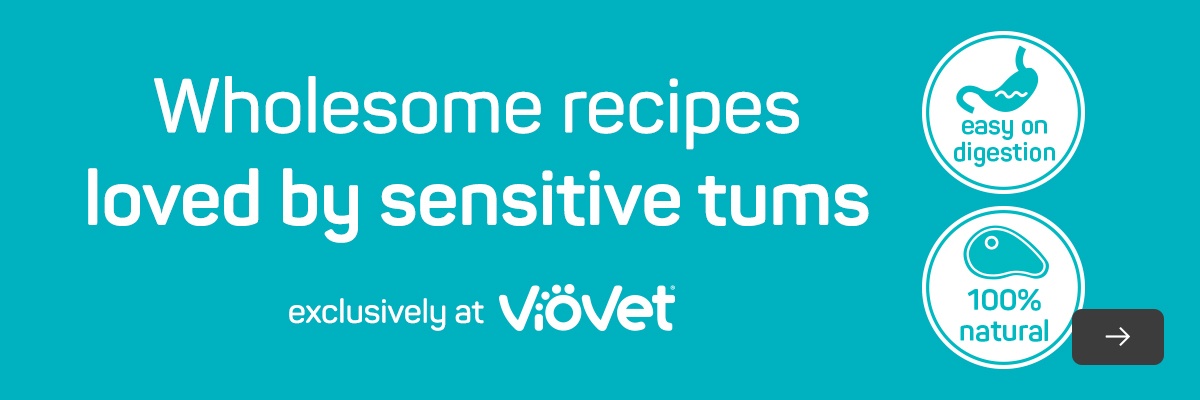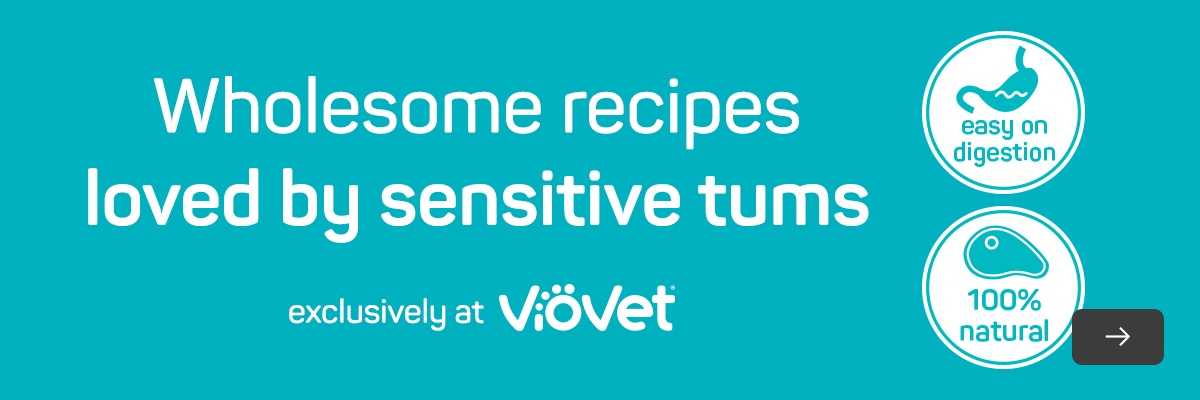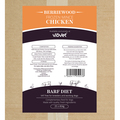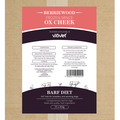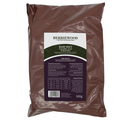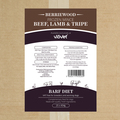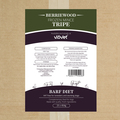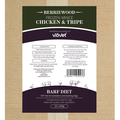Did you know that switching to a more expensive diet could save you money in the long-run?
With so many dog foods on the market nowadays, deciding which one is right for your dog can be a confusing process. Yes, variety is a good thing, but too much of it can make the decision more difficult. Dry or wet food? Commercial kibble or home-cooked? Leading brand or supermarket own? Breed or life stage specific? When it comes to dog food, navigating our options is a bit of a minefield.
Not everyone favours the commercial diet but there are plenty that do. While some are passionate about the benefits of alternative diets i.e. home-cooked or raw, others are incredibly satisfied with the standard of commercial diets out there and choose to feed them as a staple diet. If you fall into the latter category, hopefully this article will guide you through the sea of choice that is commercial dog food and encourage you to opt for quality over price. In fact, switching to a more expensive diet might actually be more economical for you in the long-run.
So, where to begin. First of all, it is worth considering your dog’s nutritional needs. Dogs are of the genus Canis and the order Carnivora, along with their wolf ancestors. You just have to look at a dog's teeth to work out its intended diet. However, being a carnivore implies that fulfilling a dog's nutritional needs is solely dependent on meat, meat, meat. But how far is this true? Look at it this way, pandas are also of the order Carnivora but their diet consists mainly of bamboo and other herbaceous shoots and leaves. In fact, based on diet alone, pandas are obligate herbivores.
It would be better to think of dogs as omnivores, like us, that can exist on a combination of vegetables and meat. While they are dependent on meat-specific protein to an extent, they can adapt without it. Yes, dogs ate raw meat in the wild, but they also lived shorter lives. Diets that focus almost exclusively on feeding meat (or vegetables, as the case may be) are by no means balanced or beneficial. Dogs need their protein, but they must get their vitamins and minerals from somewhere and a good ratio to go by is 50% meat and 50% vegetables. Their feeding behaviour, however, would imply that dogs are actually ‘opportunivores’ that will eat whatever’s going.
So, we have learnt that getting the balance right is important. If you were thinking about feeding a vegetarian diet to your dog, think again. Dogs need protein to thrive and supplements are no substitute for what meat can provide. As we know, fresh meat is expensive to buy and dogs can consume more of it than we can, pushing up the cost even more. For many, this is one of the reasons a raw diet is just not practical.
Choosing a commercial diet isn’t about being lazy; it’s about choosing something you believe to be balanced and complete that is also convenient and palatable. There is little risk of your dog contracting salmonella or bacterial infections from commercial kibble, as many have done from raw diets. You can also be sure your dog is getting the blend of nutrients it needs most, from a recipe that has been carefully formulated and tested. If the diet you feed your dog is working, albeit raw or commercial, stick with it. For many people, commercial dog food works wonders.
But not all commercial dog food is nutritionally balanced. With so many dog food companies vying for our attention with claims their food contains the finest ingredients, is guaranteed to improve coat shine, is nutritionally tailored and so on, it can be hard separating the food from the marketing. Because meat is expensive, companies producing cheap dog food include very little of it in their recipes, choosing instead to bulk their food with cheap fillers such as cereal and grain. Grain is an ingredient that exacerbates many allergies and can be difficult for your dog to digest. Higher quality kibbles are generally grain and wheat free as they do not need to be 'bulked up.'
In truth, the more expensive commercial diets contain the highest percentage of expensive ingredients like meat. Cheap dog foods actually contain very little meat. Food labels can mislead us into thinking the ingredients contained in the product are appealing i.e. 'chicken meal' or 'dried chicken' sounds quite promising but is in fact the rendered down feather shafts, entrails and carcasses of the chicken, as opposed to its actual meat.
That said, 'meat meal' is much more nutritionally concentrated than fresh meat, so your dog will need to consume less of it to reap the benefits. Cheap, low-quality dog foods are likely to include meat meal as their main sources of protein, whereas higher quality foods will include it alongside fresh meat and vegetables (as opposed to 'bulking ingredients' like cereals and fillers).
Cheap dog foods contain a myriad of fillers and preserving agents, as well as excess salt and flavourings to enhance the food's palatability. In short, cheap dog food manufacturers cut corners, something which Henrietta Morrison (writer of Dinner for Dogs) reiterates:
A very cheap dog food is cheap for a reason. It’s not because the company has decided out of the goodness of their heart to make a cheap pet food; it’s because the ingredients in it are extremely cheap ingredients.
Even if the cheap dog food you are feeding now seems to be suiting your dog, the older it gets the more likely it is to experience problems. Fillers can trigger allergies; while too much salt can cause problems similar to those we might encounter ourselves. It is possible that further down the line, the money you've saved on dog food over the years will be made up in vet bills. Yes, cheap dog food may be kind on your wallet, but spending a little more can really be more economical. In fact, many people that now buy a quality diet report that it lasts significantly longer than a cheaper alternative.
But why is this?
For a start, higher quality dog food has a richer nutrient content and provides more of what your dog needs for energy and nourishment. It also contains fewer bulking ingredients such as grain and cereal that consist of empty calories and have no nutritional benefit at all. Because the food offers more of what your dog actually needs, it can consume less of it than a cheaper diet. A smaller amount of high quality food provides more energy and keeps your dog feeling fuller for longer, meaning a bag of food goes the extra mile. It is likely you will get through more cheap food than you would if you switched up to something a little more expensive as your dog will keep coming back for more every time its energy reserves peter.
A diet that is richer in meats, vegetables and essential oils will also keep your dog's stools firmer and more regular.
So, what do we recommend?
VioVet sells a range of dog foods ranging in price and popularity, to meet everyone's needs and preferences.
Our VioPet Adult Turkey & Rice and Adult Lamb & Rice are complete diets designed to fuel a healthy, active life, without breaking the bank. With key benefits that include being gentle on digestion, free from wheat and wheat gluten, supportive of skin and coat health, and helping maintain an ideal weight, this is a great food at an even better price point.
Barking Heads is a popular brand with a commendable philosophy towards pet food, striving to produce diets that are naturally wholesome and nutritionally beneficial in their ingredient content. Barking Heads is proud to use only UK-sourced ingredients in their range of diets, including a high percentage of selected meats and fish such as lamb, chicken and salmon. White and brown rice is high in digestible fibres and ground oats provide digestive support while helping to manage cholesterol. The diets also contain a hearty blend of potatoes, vegetables (tomatoes, carrots and sweet potatoes), and essential vitamins and prebiotics. It is worth noting that Barking Heads include no unnecessary fillers in their diets because of their high meat and vegetable contents. To view their range, click here.
Another brand with a shining reputation for producing pet foods with a high meat content is Orijen. Sourcing only the freshest regional ingredients from Western Canada's 'foothill farms, fertile prairies and cold clear waters,' Orijen is committed to the nutritional needs of your dog, so much so that you'll be hard-pressed to find a better quality commercial diet out there. All Orijen recipes are nutritionally balanced and complete, and are free from preservatives and high-glycemic carbohydrates. Orijen recognises your dog as a carnivore, hence its inclusion of fresh whole meats, tripe, liver, cartilage and marrow in its diets. The company also ensures 20% of every recipe is made up of fruits, vegetables and botanicals to help strengthen and support internal functions and eliminate harmful toxins. To view Orijen's range, click here.
There are many other high-quality brands worth mentioning i.e. Lily's Kitchen, but they are easy enough to find by checking food labels before you buy. If the ingredients list is simple and the meat content is high, you are probably onto a winner. Try to avoid foods that contain lots of grain, cereal and 'chicken meal' as the diet is unlikely to be nutritionally balanced. Next time you are buying your dog's food, consider how much you are spending on a bag and how long it is lasting you. Do some research and invest a little bit extra in what you feed your dog, as a quality diet that contains the essentials for health, energy and growth will go a lot further than a cheap commercial diet bulked to the hilt.
If you have any questions or suggestions for future blog posts, please feel free to email me at: [email protected]
Written by: Hannah

